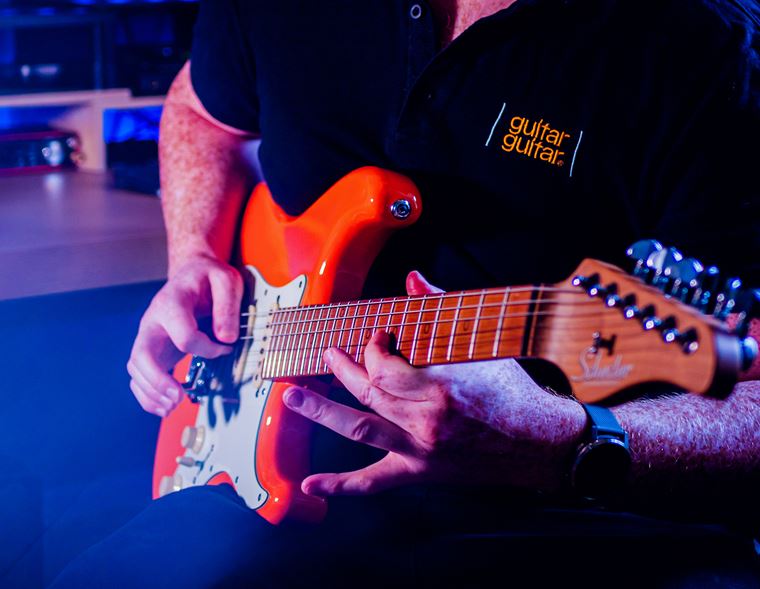Why Do I Need a Universal Audio OX?
What piece of gear is intrinsic to great producers, successful YouTubers, pro guitarists, home recording enthusiasts and hobbyists alike? Which one singular thing unites them all?
It’s the Universal Audio OX Amp Top Box, or ‘OX box’, as the industry knows it. Never heard of it? Well, if you enjoy great guitar tones and the idea of being able to properly control them, then this is this secret that your studio set up has been missing!
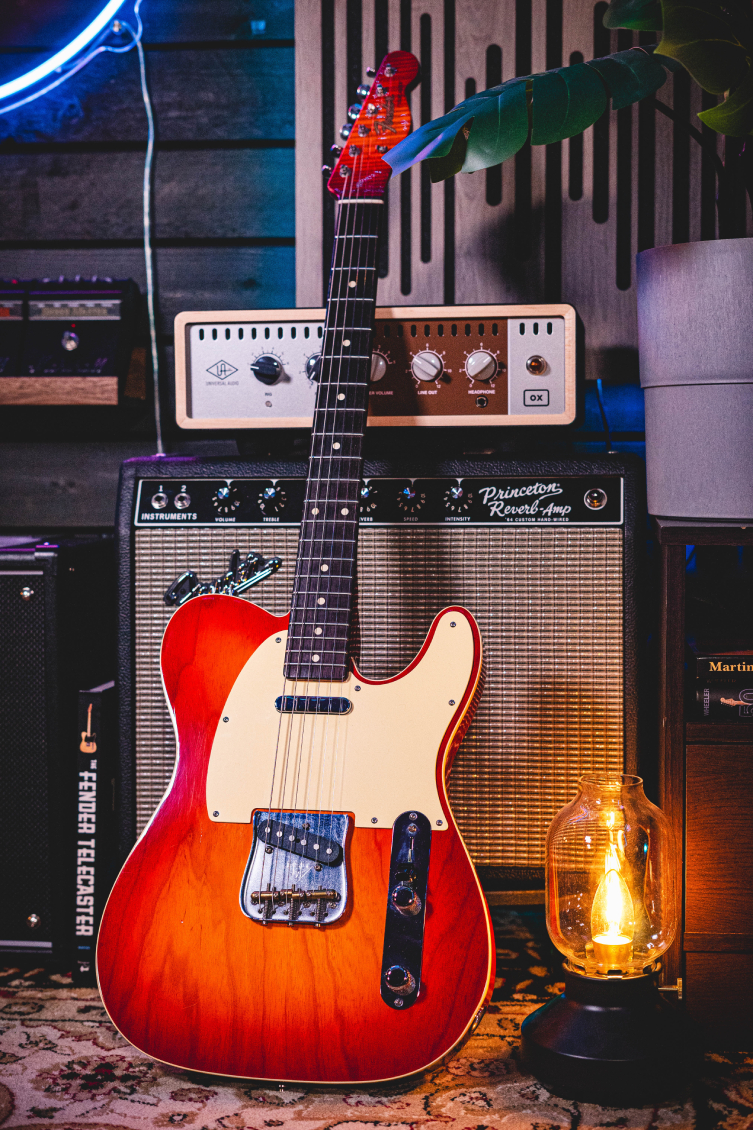
Shall we take a look? Yes, let’s…
Universal Audio
The OX comes from Universal Audio, a name you’ve almost definitely come across on your musical travels. Universal Audio are the makers of not only top quality recording hardware, but creators of arguably the best plugins that a producer working today can have in their arsenal. UA’s compressors, channel strips and EQ plugins are used across the world by top-dollar studios, and their effects plugins have set the benchmark for quality and creativity.
Indeed, for the home recording enthusiast and limo-driving superstar alike, UA are the team who add that million dollar polish to their productions. It’s no hyperbole from us, either: their reputation has long been set firmly in the stratosphere.
So, it comes that they’ve turned their expertise to the specifics of capturing guitar sounds. This is where we are travelling today, so let’s look into what the UA OX actually is.
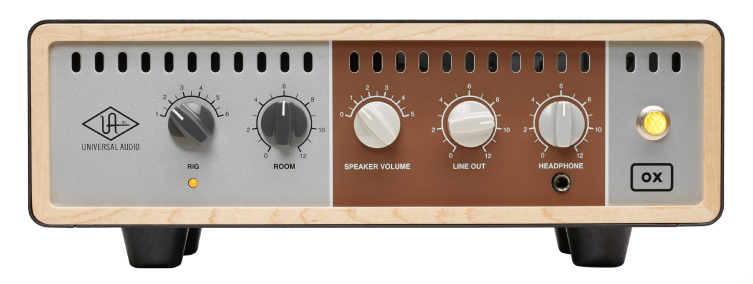
Universal Audio OX
Strange name for a piece of gear? Not really, when you consider it's not only a take on ‘aux’ i.e. auxiliary (which is literally what it is, an auxiliary part of your signal path, providing additional help and support), but it’s also a rugged, powerful beast that does all of the heavy lifting, right? An OX it is!
So, the UA OX is a device that incorporates a reactive load box, attenuator, DI box and audio interface into one straightforward unit. The idea is that the OX sits after your amplifier in your chain, and can then be used in a number of practical situations where it’s not feasible to have your amp blasting. The OX takes the amp’s signal - as full-on as you want it to be in order to get your sweet spot - and attenuates that sound, feeds it into a speaker simulator (there are 22 to choose from), adds mic simulation (pick from six mic models), effects (up to 4 at once if you want them) and then puts that signal out into your studio monitors, mixing desk or headphones: however you want to finally hear your sound, basically.
It’s important to make this clear, though: this is not an amp modeller. It’s not meant to be. This is a device to let you get the best from your existing amps, using transparent attenuation and then digital modelling for speakers, mics and room modelling. Use it with your favourite amps, not instead of your favourite amps, and you’ll be set up to win.
Get the Most from Your Amp at Home
What this means is that you get the best from your amp - with no compromises required for volume, breakup etc. - and then you can add some extra ‘production’ to your sound in an entirely realistic manner. This is all real-time of course, so you are able to use your amp for practice and pleasure playing at all times: it’s not a matter of adding all this stuff afterwards ‘in post’, as it were. You’ll be setting your own amp up to perform at its best - clean, biting or blasting - and then determining how you actually hear that tone. Now, that is something that every guitarist can use! You can hardly crank your Bassman/AC30/Friedman/5150 to max volume at the best of times, let alone 3AM, right? Well, how about you can, and listen through your studio monitors, or even better, a set of cans? Now that is something worth thinking about, if you love that three-dimensional amp tone that has already cost you a ton of cash to achieve. Why practise with some or other amp or device that’s a massive compromise when you now don’t have to?
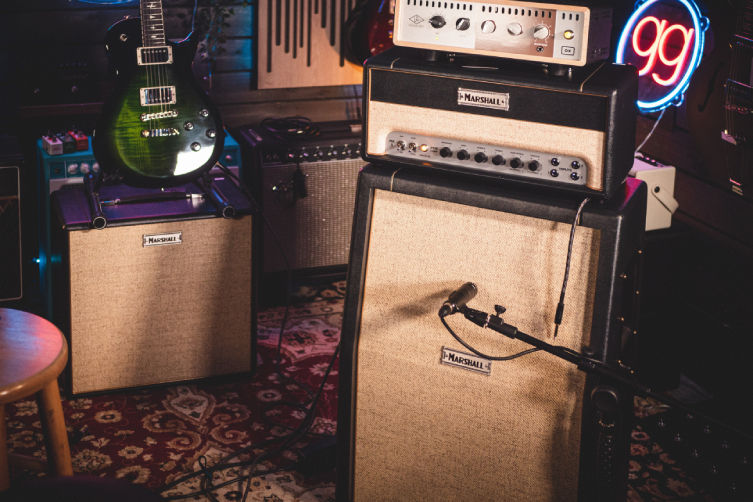
Reactive Loads
Universal Audio talk about the OX being the ‘world’s best reactive load box’, which is a bold claim for sure, but the performance certainly seems to back up the talk: UA have designed the OX to be seen by your amp as an ‘actual’ speaker, since it works with the amp’s continuously variable impedance and response to make sounds that are not realistic as much as they are actually real.
The OX goes beyond the somewhat static/frozen-in-space notion of impulse responses (IR’s) by dealing with controllable harmonic and sonic complexities that tend to only occur at certain volumes and with certain frequencies. These dynamic changes (and therefore, output and tonal changes) are partly what make the difference in a fully realistic amplifier experience: those little variables, transients and ‘hazards’ in the amp’s performance that add up to make the sound a living, breathing article. This is the difference missing from a great many other devices on the market, and just one of the things that sets the OX apart from the competition: where IR’s are pretty much fixed in place, the OX is reactive and changeable.
Controlling the Ox
The UA OX Amp Top Box, to once again give it its full title, is a pretty simple device in terms of user interface. The front panel has a row of five knobs, all clearly articulated and used to choose rigs (pick one of six complete setups that include an emulated speaker cab, close mics, ambient mics and up to 4 studio effects), Room (which determines the nature of the room mics’ ambience contribution to your overall sound) and three separate output levels for speaker volume, line out and headphones. Pretty simple! That’s because most of the deeper editing is achieved via the software, which you can use either on your laptop or your iPad. You can play about with over 100 different rigs, customise them to your preference and save them for later recall. These can, of course, also be included in the six you choose from the OX’s front panel.
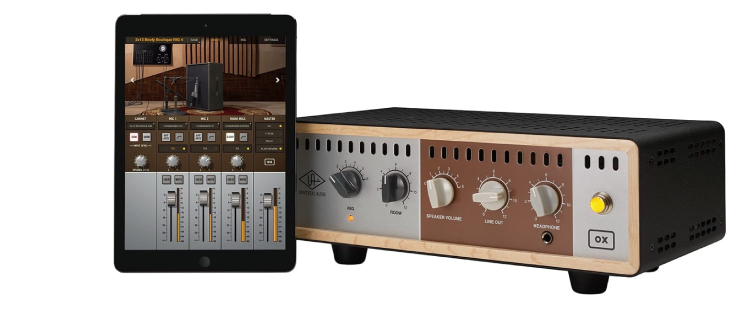
Around the back, you get all of the connections you’d expect to feed the OX sound to where you need it: 3x USB, SPDIF, ¼” stereo outs, its’ all back here. Aso back here is the main impedance knob, which gives you all the usual increments. Dial in what you need and you can get back to business.

UA Modelling
So, UA’s Dynamic Speaker Modelling is what covers the sonic behaviour: headroom, breakup, distortion characteristics etc, even ‘cone cry’, which refers to those frequencies a speaker can emit that have nothing to do with the notes you just played! All of this is recreated faithfully, at any volume. You ARE pushing your amp, you just don’t need to blast your hearing into oblivion any more to get the best tones! You pick from the 22 speaker cabinet options and save your preferences as part of a Rig.
Another notable element is the UA Dynamic Room modelling. No longer must you work around a flat and lifeless sounding room! The Room control on front lets you select an ambience that is different levels of ‘just right’,depending on how much ‘room’ you want on your signal. You don’t need any, actually, but when you hear how nice it is to include a little, we reckon you’ll be racing for the Room dial on the OX’s front panel!
Producer Benefits
By this stage, any producers reading this will no doubt be fully imagining the circumstances in which they can put the OX to good use. Operating loud tube amps at their optimum settings without requiring the tyranny of huge volume is a pretty obvious win, but there are other benefits, and the clear ones to us are these two: firstly, you can achieve world-class results from literally any room, so a poor sounding room won’t stop you from getting a great ‘live room’ sound, and; you don’t need to own 22 different ‘real life’ cabinets and six ‘real life’ microphones since they are included through the software and operation of the OX. It basically makes life easy for any producer with one nice amp to get stellar sounds every time.
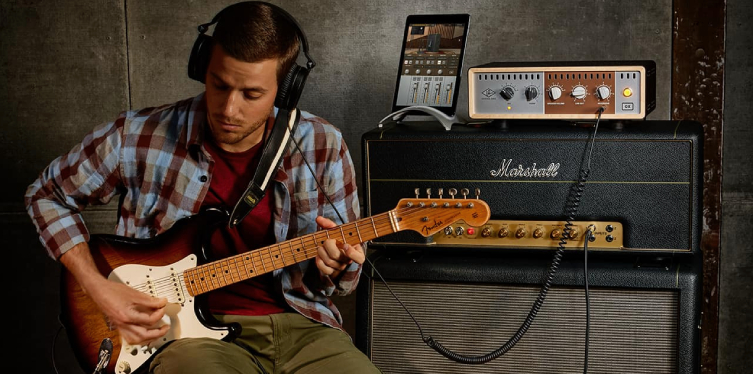
Every Guitarist Needs One of These!
Unless you are strictly digital these days, we think all players will benefit from using an OX box. Sales patter? Not really. We’we mentioned how great it is for producers. We’ve talked about how amazing it is to fire up your loud tube amp and get its authentic, sweet-spot tone coming through headphones for anytime practice. On top of that, we’d add that the OX can absolutely be used in a live context, where your amp may be too loud to have blasting on stage (it may bleed into other instruments etc.) so the OX can send a faithful, authentic signal to the sound engineer and you can have it in your monitor wedge or in-ears.
The practical applications are wide, and the quality of performance is absolutely in line with what we’ve come to expect from Universal Audio; that is, absolutely world-class. This is one of those occasions where the market needed a very particular product to solve a number of needs, and the OX has filled those requirements pretty magnificently. We’ll say it: it’s a game-changer.







